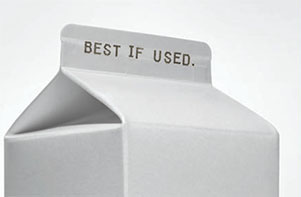This page contains affiliate links which support SalvageFood.org, a 501(c)(3) nonprofit, if you make a purchase.
Save Money. Save Food. Save Earth.

How to Freeze Vegetables
(and some fruits that seem like vegetables) Store Vegetables for 12 Months or More with Proper PreparationFreezing is a great way to store excess fresh vegetables, extend their shelf life and save money. When prepared and packaged correctly, frozen vegetables will be as nutritious as fresh vegetables.
Some vegetables, such as broccoli, carrots, and peas, are easy to prepare for freezing and freeze very well. Others, such a cucumbers and spinach, can be a little bit more difficult but can be frozen with a bit of extra time and effort.
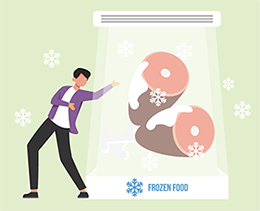
Did you know?Freezing is the best method for preserving food and has been a natural, trusted practice for centuries. Frozen foods stored continuously at 0°F or below can be kept indefinitely.
Here are the basic steps to prepare fresh vegetables for freezing:
- Before you begin, make sure you have plenty of ice available to cool down your vegetables after blanching. You'll also need the proper quantity of storage containers to accommodate the amount of vegetables you're going to freeze.
- Wash and trim the vegetables. Wash the vegetables thoroughly under cold water. Trim any excess stems or leaves. If there are any insects present, soak for 1⁄2 hour in a solution of 4 teaspoons of salt to 1 gallon of cold water.
- Blanch the vegetables. Blanching helps to preserve the color and nutrients of the vegetables. Use a specially designed steamer pot that has a mesh or perforated metal basket and lid. Use one gallon of water per pound of prepared vegetables. Put the vegetables into the blanching basket and lower into vigorously boiling water. Place a lid on the blancher and start counting blanching time
as soon as the water returns to a boil. Keep heat high for the time given in the "Blanching Directions & Times for Freezing Vegetables" chart below for the vegetables you are freezing.
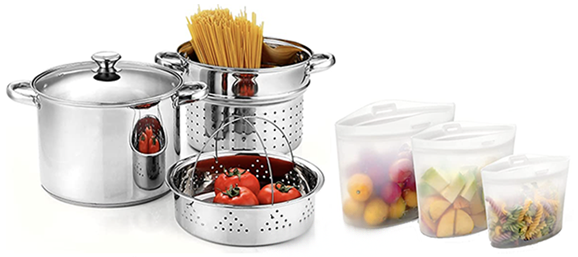 Stainless blanching pot and silicone food storage bags for freezing vegetables.
Stainless blanching pot and silicone food storage bags for freezing vegetables.
- Immediately after blanching, plunge the vegetables into a bowl of ice water. This will shock the vegetables, stop the cooking process and help to preserve their color.
- Drain the vegetables well and pat them dry with paper towels.
- Once the vegetables are dry and have cooled down, place them in a single layer on shallow trays or pans. Place the trays in your freezer until the vegetables are firm. Remove the vegetable trays from your freezer and quickly place into freezer safe bags or containers. Close the containers and place them into your freezer immediately. If desired, you can label the containers or bags with the name of the vegetable and the date before placing them into your freezer. Vegetables frozen using this method will remain loosely packed in the container so the amount needed can be poured from the container and the package reclosed.
- Because speed in freezing is important for best quality, you shouldn't place more unfrozen vegetables into the freezer at one time than will freeze in 24 hours — usually 2 to 3 pounds of vegetables per cubic foot of freezer space.
- Frozen vegetables should be cooked without thawing.
Blanching Directions & Times for Freezing Vegetables
Blanching time is crucial and varies with the vegetable and its size. Underblanching stimulates the activity of enzymes and is worse than not blanching. Overblanching causes loss of flavor, color, vitamins and minerals.



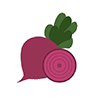
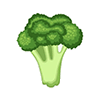



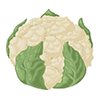
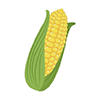

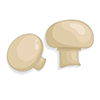
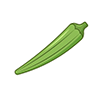
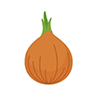


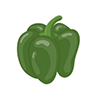

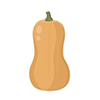
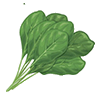
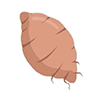


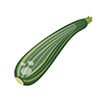
How long do frozen vegetables last?

Asparagus
Small: 2 minutes
Medium: 3 minutes
Large: 4 minutes
Medium: 3 minutes
Large: 4 minutes

Beans (Green or Wax)
3 minutes

Beans (Lima, Butter or Pinto)
2 to 4 minutes

BeetsLeave tap root; trim tops leaving 1⁄2-inch of stem. Cook in boiling water until tender. Cool and peel. Remove stem
and tap root and cut into slices or cubes.
Small: 25 - 30 minutes
Medium: 45 - 50 minutes
Medium: 45 - 50 minutes

BroccoliSplit
lengthwise into pieces no more than 1-1⁄2 inches across.
3 minutes

Brussels Sprouts
Small: 3 minutes
Medium: 4 minutes
Large: 5 minutes
Medium: 4 minutes
Large: 5 minutes

Cabbage
Cut into medium to coarse shreds, thin wedges, or separate head into leaves.
Cut into medium to coarse shreds, thin wedges, or separate head into leaves.
1-1/2 minutes

CarrotsRemove tops. Wash and peel. Leave small carrots whole. Cut others in 1⁄4-inch cubes, thin slices or lengthwise strips.
Small whole: 5 minutes
Diced or sliced: 2 minutes
Diced or sliced: 2 minutes

CauliflowerBreak into pieces about 1 inch across.
3 minutes

Corn on the cobSort according to size. Small ears 1-1⁄4 inches or less in diameter. Medium ears 1-1⁄4 to 1-1⁄2 inch diameter. Large ears: over 1-1⁄2 inch diameter.
Small: 7 minutes
Medium: 9 minutes
Large: 11 minutes
Medium: 9 minutes
Large: 11 minutes

EggplantWash, peel and slice 1/3 inch thick. Blanch in 1 gallon of water containing 4-1⁄2 teaspoons citric acid or 1⁄2 cup
lemon juice.
4 minutes

MushroomsFor better color, soak 5 minutes in a solution of 1 pint water and 1 teaspoon lemon juice or 1-1⁄2 teaspoons citric acid. Optional Method – Sauté in butter or margarine until tender. Package, seal and freeze.
Buttons or quarters: 3-1/2 minutes
Slices: 3 minutes
Slices: 3 minutes

OkraRemove the stems at the end of the seed cells, being careful not to expose the seed cells.
Small pods: 3 minutes
Large pods: 4 minutes
Large pods: 4 minutes

OnionsPeel and wash. Chop or dice onion (about 1/4-inch to 1/2 inch pieces). Arrange onions in a single layer on a clean cookie sheet and place in freezer until frozen (about an hour). Transfer to a freezer safe bag or container when frozen, excluding as much air as possible from the bag.

Peas (edible pod)Remove blossom ends and strings. Leave whole.
Small pods: 1-1/2 minutes
Medium pods: 2 minutes
Medium pods: 2 minutes

PeasRemove peas from pods.
1-1/2 minutes

PeppersWash well. Slice or dice. Blanching not necessary. Follow directions for onions above.

PotatoesPeel and wash.
Whole: 3 to 5 minutes
Diced: 2 minutes
Diced: 2 minutes

Pumpkin and SquashWash, cut into small pieces and remove seeds. Cook until soft in boiling water or in 350° F oven. Remove pulp from rind. Mash, cool, package and freeze.
Cook until tender

SpinachRemove any roots and large stems. Wash thoroughly to remove any dirt. Dry well after blanching. Place dried spinach leaves into plastic freezer bags, filling 2/3 of the bag. Roll up the bags and press out as much air as possible. Seal and place in freezer.
2 minutes

Sweet PotatoesCook until tender in water or in the oven. Cool, peel and cut in halves, slice or mash. To prevent whole or sliced sweet potatoes from darkening, dip for 5 seconds in a solution of 1 tablespoon citric acid or 1⁄2 cup lemon juice per quart of water. To prevent mashed sweet potatoes from darkening, mix 2 tablespoons orange or lemon juice with each quart of mashed sweet potatoes.

TomatoesDip in boiling water for 30 seconds to loosen skins. Peel and core. Leave whole or cut in pieces.
3 minutes

TurnipsWash, peel
and cut into 1⁄2-inch cubes.
2 minutes

ZucchiniWash and cut into 1/2 inch pieces.
3 minutes
Frozen vegetables can last for 12 months or more when prepared properly and stored in the freezer. However, the quality of the vegetables will start to decline after 6 months.
Tips for freezing vegetables- For best results, freeze vegetables as soon as possible after harvest.
- The containers you use for freezing your vegetables should be moisture and vapor resistant, durable, easy to seal and should not become brittle at low temperatures.
- Do not overcrowd the containers or bags when freezing vegetables.
- Label the containers or bags with the name of the vegetable and the date.
- Frozen vegetables should be cooked without thawing.


